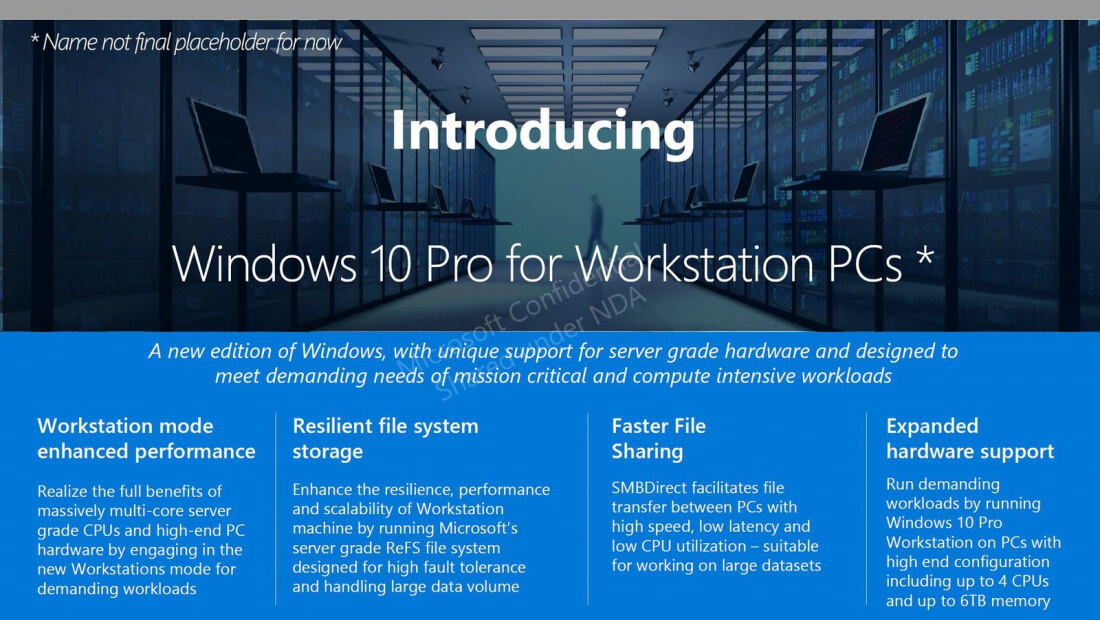
A few days ago Microsoft accidentally pushed out a buggy, internal Windows 10 build that caused big problems for users. The company pulled the problematic Build 16212 quickly and offered an apology along with some troubleshooting tips for affected machines. Apparently, this build also included references to a new edition of Windows 10 for advanced users with high-performance PCs.
Three new editions were referenced, including Windows 10 Pro for Advanced PCs, Windows 10 Pro N for Advanced PCs, and Windows Server 2016 ServerRdsh. As ZDNet explains, the N edition simply refers to the version Microsoft makes for Europe, while Rdsh (standing for ‘Remote Desktop Session Host’) is presumably aimed at hosting Windows applications or the full Windows desktop for Remote Desktop Services client.
The leak was followed by a slide posted on Twitter by user TheGrandMofongo, shedding more information on Windows 10 for Advanced PCs — dubbed “Windows 10 Pro for Workstation” in the slide. There are four main capabilities described in the slide: a workstation mode, the Resilient file system or ReFS, which succeeds Microsoft's NTFS file system, faster file sharing, and expanded hardware support.
In Workstation mode Microsoft plans to optimize the OS by identifying “typical compute and graphics intensive workloads” to provide peak performance and reliability when Workstation mode is enabled.
Windows 10 Pro for Advanced PCs will also benefit from a new resilient file system, ReFS, which is fully backwards compatible, designed for fault tolerance, and optimised for handling large amounts of data. Microsoft introduced ReFS with Windows 8, but Microsoft notes that NTFS, or New Technology File System, has been its mainstay filesystem even in Windows 10 today.
Microsoft is also including the SMBDirect protocol-based file sharing in Windows 10 Pro for Advanced PCs, which allows for high throughput, low latency and low CPU utilization when accessing network shares.
Lastly, Microsoft is planning to allow Windows 10 Pro for Advanced PCs on machines with up to 4 CPUs and a memory limit of 6TB. Windows 10 Pro currently only supports 2 CPUs.
Microsoft is yet to confirm anything about Windows 10 Pro for Workstation (or Advanced PCs), so it’s unclear when we’ll see this version of Windows available to the public. The slides note that the mentioned capabilities are just a starting point, “We are engaged with our advanced users, and will continue to bring innovation to this high- end segment of the market.”
https://www.techspot.com/news/69571-microsoft-building-new-edition-windows-10-power-pcs.html